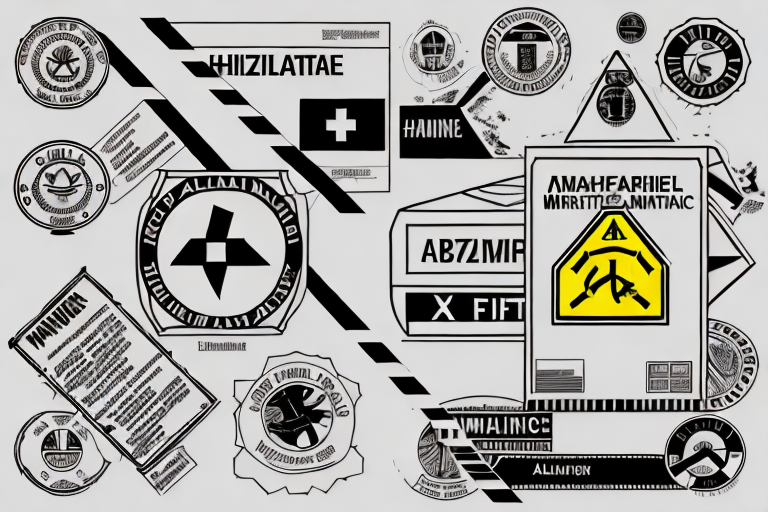Introduction to Shipping Hazardous Materials with FedEx
Shipping hazardous materials can be a daunting task, requiring meticulous planning and adherence to stringent regulations. FedEx, one of the world's leading shipping services, offers specialized solutions for transporting hazardous materials safely and efficiently. Understanding FedEx's shipping rates for hazardous materials and the factors influencing these costs is essential for minimizing expenses and ensuring compliance with international and domestic regulations. This comprehensive guide explores the intricacies of FedEx's hazardous materials shipping services, best practices, and strategies to optimize shipping costs.
Understanding Hazardous Materials
Definition and Classification
Hazardous materials are substances or items that pose significant risks to health, safety, or the environment. These materials can be categorized into liquids, solids, or gases and include, but are not limited to, chemicals, batteries, flammable liquids, and explosives. Proper classification is crucial, as it dictates the handling, packaging, and transportation requirements.
Identification and Labeling
Accurate identification of hazardous materials is achieved through the Material Safety Data Sheet (MSDS), which provides detailed information on the properties and potential hazards of the material. Additionally, hazardous materials must be labeled with specific markings and placards indicating the type of hazard and the level of risk. Compliance with labeling standards as outlined by the Occupational Safety and Health Administration (OSHA) is mandatory to ensure safety during transportation.
Emergency Response Planning
In the event of a spill or release, having an emergency response plan is vital. This plan should include procedures for containment, cleanup, and communication with emergency services. Proper training and equipment must be provided to personnel handling hazardous materials to minimize the risk of injury or environmental damage.
FedEx's Specialized Services and Compliance
FedEx Dangerous Goods Program
FedEx offers specialized shipping services for hazardous materials through its FedEx Dangerous Goods program. This program provides access to trained professionals who assist in classifying hazardous materials, ensuring regulatory compliance, and offering specialized packaging and labeling services. Available services include FedEx Ground, FedEx Express, and FedEx Freight, each tailored to different types and quantities of hazardous materials.
Regulatory Compliance
Shipping hazardous materials with FedEx requires strict adherence to regulations set by governing bodies such as the International Air Transport Association (IATA) and the International Maritime Dangerous Goods (IMDG) Code. FedEx ensures that all shipments comply with these standards, promoting safety and regulatory adherence.
Factors Influencing Shipping Rates
Type of Hazardous Material
The nature of the hazardous material significantly impacts shipping rates. Materials deemed more hazardous require additional precautions, specialized packaging, and handling procedures, all of which contribute to higher costs. For instance, shipping flammable liquids typically incurs higher rates compared to less hazardous substances.
Quantity and Packaging
The quantity of hazardous materials being shipped directly affects the shipping rate. Larger quantities may necessitate specialized packaging to ensure safety, which can increase costs. FedEx provides guidelines on permissible quantities and appropriate packaging to optimize shipping efficiency and cost.
Destination and Mode of Transportation
The destination plays a crucial role in determining shipping rates. International shipments may involve compliance with multiple regulatory frameworks, increasing the complexity and cost. Additionally, the chosen mode of transportation—whether air, ground, or sea—can influence rates due to varying safety measures and logistical requirements.
Calculating and Optimizing Shipping Costs
Using FedEx's Online Rate Calculator
FedEx offers an online rate calculator to help estimate shipping costs for hazardous materials. By inputting details such as the type of material, quantity, destination, and preferred delivery speed, shippers can obtain a preliminary cost estimate. However, consulting with a FedEx professional is recommended for more accurate and tailored pricing.
Accurate Classification and Documentation
Proper classification of hazardous materials ensures correct pricing and compliance. Misclassification can lead to fines, shipment delays, or increased costs due to reclassification efforts. Maintaining accurate documentation, including safety data sheets and compliance certificates, is essential for smooth transportation and cost management.
Consultation with FedEx Professionals
Engaging with FedEx's trained professionals can provide insights into cost-saving opportunities and ensure compliance with all regulations. Professionals can offer guidance on packaging optimizations, regulatory exemptions, and the most cost-effective shipping methods based on the specific requirements of the hazardous materials being transported.
Regulatory Requirements and Best Practices
Adhering to Regulations
Compliance with federal, state, and international regulations is mandatory when shipping hazardous materials. This includes proper labeling, packaging, and documentation as outlined by regulatory bodies such as Federal Aviation Administration (FAA) and Maritime Administration (MARAD).
Emergency Preparedness
Having an emergency response plan is a best practice that ensures preparedness in case of accidents or spills. Regular training sessions and drills for employees handling hazardous materials can significantly reduce the risk of incidents and promote a culture of safety.
Regular Audits and Assessments
Conducting regular audits and assessments of shipping practices helps identify areas for improvement and ensures ongoing compliance with evolving regulations. Staying informed about changes in regulatory requirements is essential for maintaining safe and cost-effective shipping operations.
Best Practices and Common Mistakes
Best Practices
- Accurate Classification: Ensure all hazardous materials are correctly classified to meet regulatory standards.
- Proper Packaging and Labeling: Use appropriate packaging materials and clear labeling to prevent accidents and comply with regulations.
- Comprehensive Documentation: Maintain thorough and accurate documentation for all shipments.
- Minimize Shipment Quantities: Shipping smaller quantities can reduce costs and simplify handling requirements.
- Consult Professionals: Leverage FedEx's expertise to navigate complex shipping requirements.
Common Mistakes to Avoid
- Misclassifying hazardous materials, leading to regulatory penalties and shipment delays.
- Using incorrect or insufficient packaging, increasing the risk of spills or accidents.
- Failing to provide accurate and complete documentation, resulting in compliance issues.
- Ignoring destination-specific regulations, which can complicate international shipments.
- Neglecting employee training on hazardous materials handling, heightening safety risks.
Conclusion
Shipping hazardous materials with FedEx requires a thorough understanding of the associated regulations, costs, and best practices. By accurately classifying materials, adhering to regulatory requirements, and utilizing FedEx's specialized services, shippers can ensure safe and cost-effective transportation of hazardous substances. Implementing the strategies outlined in this guide will not only optimize shipping rates but also enhance compliance and safety standards across all shipments.




















